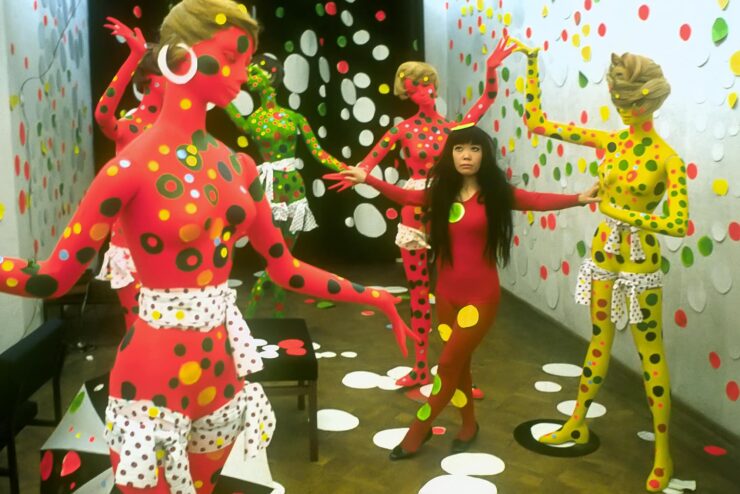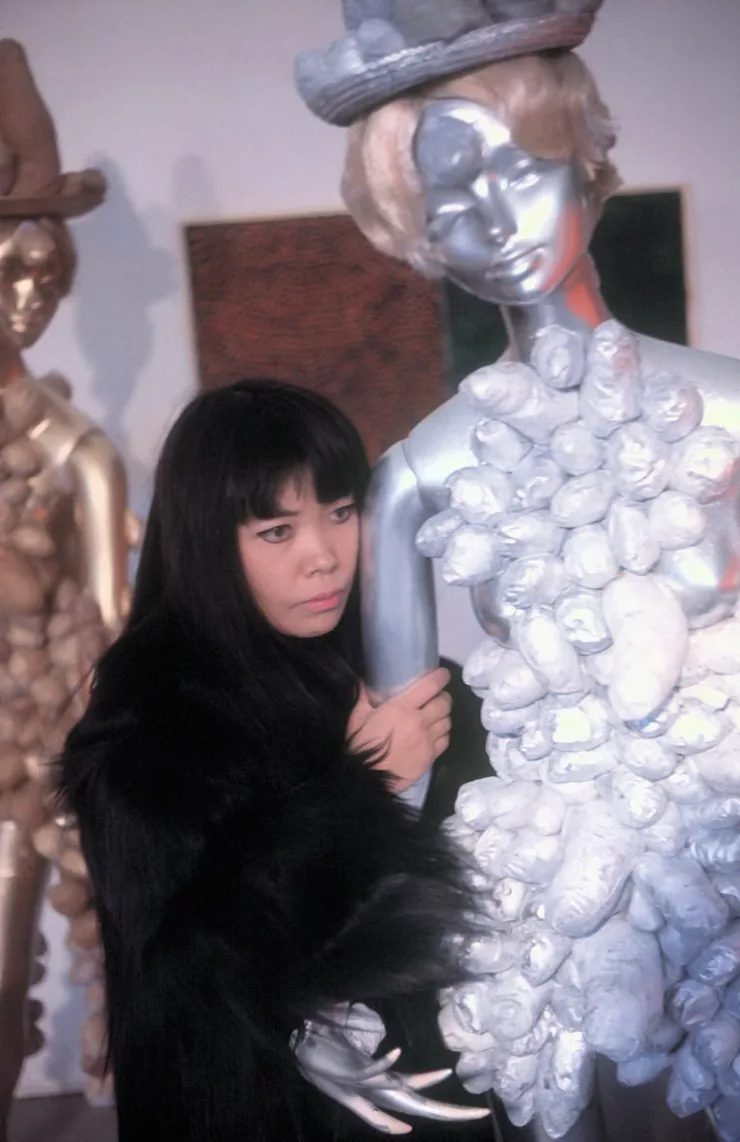Yayoi Kusama. The Dutch Years 1965-1970*
*New light on Kusama’s early years.
*New light on Kusama’s early years.
The Stedelijk Museum Schiedam presents an exhibition dedicated to the Dutch years of Japanese artist Yayoi Kusama. On display are the works she made during the various periods in which she lived and worked in the Netherlands, alongside many photographs of Kusama taken while she was in the country. That unknown and very fragile works from Kusama’s early years are now being exhibited together is quite extraordinary. Yayoi Kusama. The Dutch Years 1965-1970 paints a surprising new picture of a self-aware young Kusama, who laid the foundations for her world-conquering artistic oeuvre in a version of the Netherlands characterised by its Provo counterculture movement, happenings and youth culture.
Kusama, the rise to world fame
Over the last few decades, Kusama (Matsumoto, 1929) has become one of the art world’s most famous and widely exhibited international stars. She has been instrumental in several iconic movements in post-war art, such as ZERO, Pop Art and performance art. Throughout her life, she has had to fight for her place in the male-dominated world of modernist art in Japan, America and Europe. Recent exhibitions have often focused on her spectacular installations from the last few years. Her collaborations with major fashion brands have also attracted a great deal of attention. In Schiedam, however, we celebrate her role as a pioneer and cult heroine of the 1960s. In the run-up to the exhibition, the museum is conducting new research based on the many photos taken by Dutch photographers, artworks in Dutch private collections, articles in Dutch newspapers and interviews with eyewitnesses to her happenings. The exhibition therefore traces Kusama’s activities in The Hague, Delft, Amsterdam and Schiedam – posing in installations, on the streets, in her studio and during happenings and fashion shows.
Performance in Schiedam
This exhibition is directly inspired by Kusama’s high-profile 1967 performance in the chapel of the Stedelijk Museum Schiedam, in which she painted the naked body of the famous artist Jan Schoonhoven with dots. In the late 1960s, Kusama had close relationships with Dutch artists whose work is featured in the museum’s collection, such as Henk Peeters and Jan Schoonhoven. Kusama was living in the United States at the time, but exhibited more often in the Netherlands than in America. Internationale Galerij Orez in The Hague played a pivotal role in this, giving her three solo exhibitions and involving her in numerous activities. In those years, Kusama’s work was influenced not only by the visual arts of the time, but also by popular culture, the political climate and the sexual revolution in the Netherlands. And vice versa.

Yayoi Kusama, Infinity Polka Dots Room in Internationale Galerij Orez, Den Haag, 1967. Foto Harrie Verstappen. Courtesy 0-INSTITUTE

Kusama in Stedelijk Museum Schiedam, 1967. Foto Harrie Verstappen
Highlights and contemporaries
Sexual liberation, self-image and institutional critique are all key themes in Kusama’s work. The exhibition in Schiedam features her early sculptures, paintings and installations, as well as a trove of never-before-seen photographs and film footage of the many happenings and several fashion shows she staged in the Netherlands. Among the highlights of the exhibition are the many works from private collections, often donated by Kusama to artists and writers she befriended. Many of these works have not been shown publicly since the 1960s. Also on display is the Infinity Polka Dots Room, which she made for her 1967 solo exhibition at Galerij Orez in The Hague. Finally, there are works by contemporaries with whom Kusama exhibited, including: Michael Cardena, Lotti van der Gaag, Tetsumi Kudo, Nol Kroes, Henk Peeters, Hans Spesshardt, Ferdinand Spindel, Celestino Valenti and Gerard Verdijk. Some of the prominent photographers whose work will also be on display include Marianne Domisse, Just Fahner, Philip Mechanicus, Harrie Verstappen, Theo van Houts, Herbert Behrens, Pieter Boersma, Cor Stutvoet, Ton Janssen and Raoul van den Boom.
Cooperation with 0-INSTITUTE
Yayoi Kusama. The Dutch Years, 1965-1970 was curated by the Stedelijk Museum Schiedam in close collaboration with Tijs Visser, initiator and director of the 0-INSTITUTE, who has been researching Kusama’s time in the Netherlands for many years.
Publication
With the exhibition comes the eponymous scientific publication ‘Yayoi Kusama. The Dutch Years 1965-1970’. This publication describes the formative but underexposed Dutch period through essays by various art specialists, numerous previously unpublished photos, newspaper reports and personal recollections by eyewitnesses, from Phil Bloom to Henk Peeters. The book, a nai010 publication, is available in our museum shop for 29,95 euros.
With thanks to
Municipality of Schiedam, Mondriaan Fund, Fund 21, Prince Bernhard Culture Fund, Turing Foundation, Fonds Schiedam Vlaardingen e.o., 0-INSTITUTE, Jaap Harten Fund, Gifted Art Foundation, Gravin van Bylandt Foundation, De Gijselaar-Hintzenfonds